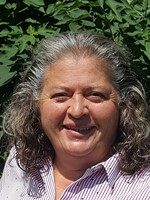Life's a Journey-Using Google My Maps in All Curricular Areas
,
Colorado Convention Center, Bluebird Ballroom Lobby, Table 7
Presenters

Session description
Purpose & objective
Purpose:
Explore how students (and teachers) can incorporate Google My Maps in all curricular areas.
Objectives:
Educators will identify cross-curricular activities where student-created maps can serve as a more authentic formative assessment. Examples include creating maps as a biography of a scientist, Olympic athlete, explorer, artist, composer, performer, etc. My Maps gauge comprehension of story characters, story sequence, and the settings of nonfiction and historical fiction reading assignments. In younger grades, teacher-created maps can offer similar authentic learning extensions.
Educators will learn about primary sources for student research and Creative Commons sources for images, both past and present day. Primary sources may include sites such as the National Park Service, the Smithsonian Institution, the Library of Congress, PBS, etc. Image sites include Unsplash.com, Picryl.com, National Archives, Digital Public Library of America, etc.
Educators will understand how to use My Maps as a means to differentiate instruction and assessment.
Outline
5 minutes-Introduction of the Presenter and show an example of a map created showing the life of a scientist and of an athlete.
15 minutes-A presentation will be shared of Cross-Curricular Activities. We will discuss using the maps in core subject areas, including Language Arts, Social Studies, Science, and Math. However, we will also explore additional subjects, such as music, art, dance, world languages, and physical education. Participants will learn ways to use My Maps in project-based learning. Additional ideas will be shared for world language classes and multilingual learners.
5 minutes resource locations-Discuss primary and secondary source sites and sites offering images available in the public domain. Offer map creation quick tips.
5 minutes Q & A
Supporting research
Hall, Sharon. “Digital Storytelling Using Google My Maps.” TeachersFirst.Org, 22 May 2022, https://teachersfirst.com/blog/2022/05/digital-storytelling-using-google-my-maps/. Accessed 28 Sept. 2023.
“OK2Ask: Google My Maps Basics.” TeachersFirst Review - OK2Ask: Google My Maps Basics, TeachersFirst.org, Nov. 2021, www.teachersfirst.com/single.cfm?id=19406
Session specifications
Tablet: Android, iOS, Windows
Knowledge Constructor
- Students curate information from digital resources using a variety of tools and methods to create collections of artifacts that demonstrate meaningful connections or conclusions.
- Students publish or present content that customizes the message and medium for their intended audiences.
- Students communicate complex ideas clearly and effectively by creating or using a variety of digital objects such as visualizations, models or simulations.
 Return
Return Participate and share: Poster
Participate and share: Poster  Trips and Tours
Trips and Tours